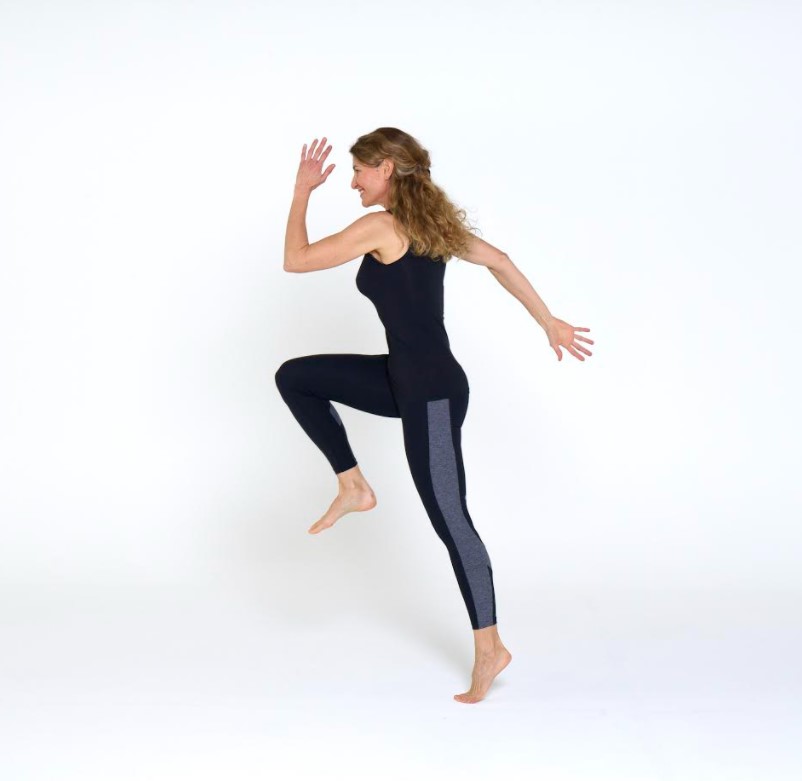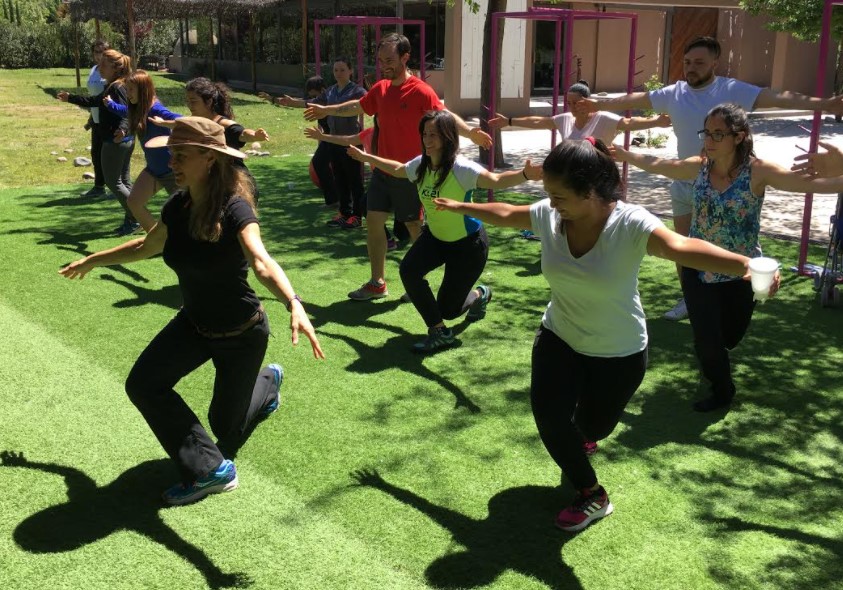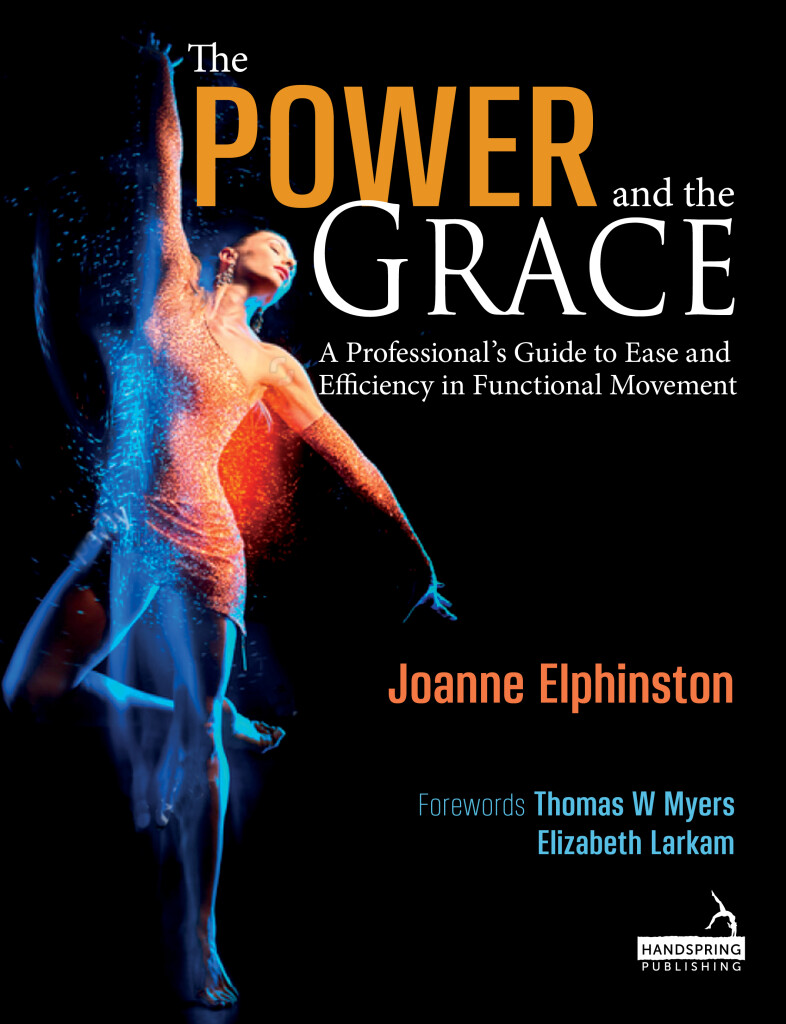Issue #329 – Wednesday, March 24, 2021
Is Pilates an Embodied Practice?
by Joanne Elphinston
The term “embodiment” is trending widely through the movement, psychology and emotional wellbeing fields at present; movement professionals in multiple professions have been quick to claim it as a benefit of their practice.
Often promoted as a mind-body practice, does Pilates have anything to offer in the embodiment space? In truth, any form of movement work can be an embodied practice, but conversely, any practice can miss that mark. The defining factor is in the method of delivery, not the content.
With an increasing understanding of the combined effects of exteroception (the perception of sensory input from outside the body), proprioception (the sense of where my body is) and interoception (the sense of how my body is), insightful teachers can guide their clients and students beyond the learning and performance of techniques, to the sense of experiencing themselves deeply through movement. An embodied practice emerges.
How is this achieved?
A teacher’s intention for the session is key. When planning the session, the first decision will be whether the session purpose today is “mind over matter” or “mind in matter”. This will shape the language used, moving from instruction to invitation. This in turn will influence whether the client must process the information in the cognitive, problem-solving part of the brain (mind over matter), or via the sensory processing regions (mind in matter). When we speak about “mind-body”, already we can see more than one possibility.
At the next level of intention, a teacher may choose whether to direct the person to work with awareness, or with focus. It may seem a fine distinction, but in that subtlety lies a world of difference in the experience of the client.
Awareness allows someone to encounter what is present in their bodies. Rather than searching for what they “should” encounter, they become aware of what they actually do encounter. Expectations and self-judgement are suspended, allowing curiosity to emerge. When adequately supported by the teacher, many clients experience this as something of a revelation – they are frequently surprised by what they sense, or don’t sense, and how it is influenced by the movements that they are performing. This insight is often carried over into their everyday lives, and they frequently report their own discoveries at their next session. It is a rich and interesting process, but an unusual one for many people whose training has previously and more conventionally been focus oriented.
When we invite someone to encounter the floor beneath their back, their exteroceptive system senses the flesh settling on its surface, their proprioceptive system notes the shape of their spine, and the interoceptive system reports how that feels. From here, the person has the opportunity to notice what changes as the movement of an arm or leg is introduced, and with guidance, perhaps make new choices. The mind waits and watches as the sensory story unfolds.
Where awareness has indistinct boundaries, focus narrows and sharpens the attention. The emphasis shifts to the cognitive processing part of the brain as the mind applies itself to the task. An element of mind over matter is introduced, with attention being withdrawn from the wider body landscape and channelled into the area of consideration. For example, when we instruct a client to focus on maintaining a floor contact with the spine during a movement, the mind steps forward to direct the process, and the intention shifts from exploration to attainment of a specific outcome.

Have you ever found yourself saying “Focus on your breathing” as a technique is performed? When we discern between awareness and focus, it is possible to see how this instruction creates a conflict that the client must negotiate. Focus directs us to concentrate our attention, in this case to the act of breathing. If we focus successfully, we have relatively little processing bandwidth left to deal with the movement task. For a relative novice, it is a hugely demanding cognitive challenge and the task becomes mind dominant. If, however, we are asked to remain aware of our breathing, we can hold that attention much more lightly and flexibly, allowing it to wander from our breath to our movement and back again, learning to check in with ourselves as our skill develops sufficiently to permit the breathing to continue comfortably throughout the movement.
Similarly, if you have ever heard yourself say “try to…” or “try not to…”, be aware that those innocuous words shift a person’s consciousness from their felt experience in the body back to the mind as they direct their focus with increased effort to fulfil the instruction you have just given.
The confidence of the teacher can play a part here. Command style instructions (“Do this, now do that”) are reassuringly concrete, but leave little space for a client to sense their own responses. They create a binary framework, with outcome choices of correct or incorrect; good or not good; can do or can’t do. This keeps the interaction relatively predictable and the cues readily reproducible, and for some clients this can be a reassuringly familiar format. This is a form of practice, but it is not an embodied practice.

Conversely, cueing an invitation allows for variation, surprises, and most importantly, collaboration. Phrases such as “What/where do you notice…?” or “Does anything change when…?” can lead the client into their body, engaging their curiosity and involving them in the process. Comparison can be an ideal strategy; for example, is there a difference in the sensory experience of the body’s ability to lengthen when connecting to the feet, or to the fingertips? Classes or individual sessions where this approach is used demand more flexibility and imagination from the teacher, a skill expansion that develops over time for those with an interest in engaging their clients at this level. It is effort which is richly rewarded – empowering people to understand the language of their own body sense enables them to share their discoveries with you with increasing insight and accuracy. This is a meaningful source of inspiration and learning for a teacher, while challenging them to become more responsive and creative.
Pilates has enormous potential to be an embodiment experience, if that is your interest as a teacher. As a starting point, remember that awareness and focus each have their place, and both are useful and appropriate when a teacher has the clarity to distinguish between them. Awareness, when supported by the teacher, can suspend self-judgement, creating space for curiosity to emerge. And finally, the sensory experience of a movement, one of inhabiting the body in the moment as opposed to dominating it with the mind, allows someone the wonder of discovering themselves through movement.
Use the code ‘elphpi10’ for a 10% discount and free shipping (UK/USA).

Beginning her journey in movement over thirty years ago as a coach and physiotherapist, Joanne Elphinston has since travelled the world as an educator, movement philosopher, embodiment explorer, performance consultant and author. She is an international expert in rehabilitative and performance movement, and her JEMS approach is used by movement professionals across the spectrum of human ability in multiple countries. Her client consultancy ranges from chronic pain neuromusculoskeletal pain through to Olympic athletes and professional performing artists, and she has authored four books, including “Stability, Sport and Performance Movement” and her most recent book, “The Power and the Grace: a Professional’s Guide to Ease and Efficiency in Functional Movement”, available at Handspring Publishing. More information can be found on Joanne’s approach and courses on www.jemsmovement.com, on Facebook at @JEMSMovementART and on Instagram at @jemsjoanne.


